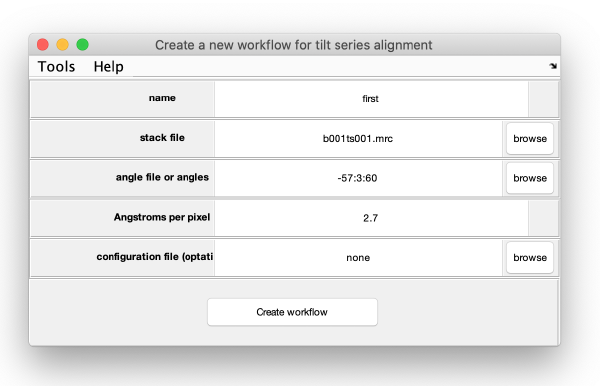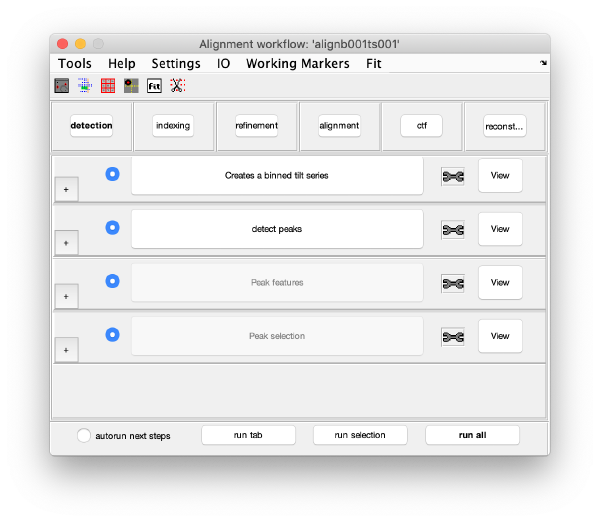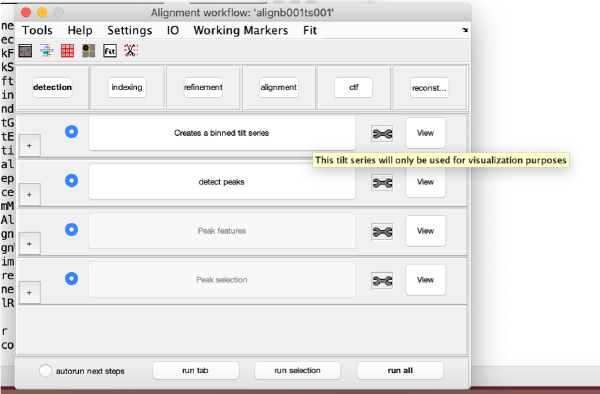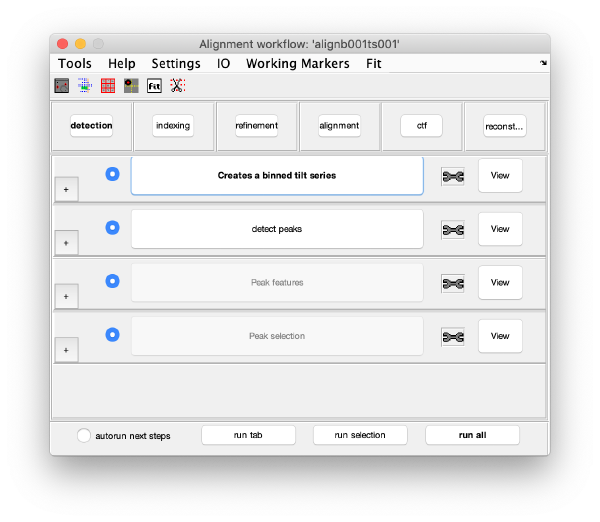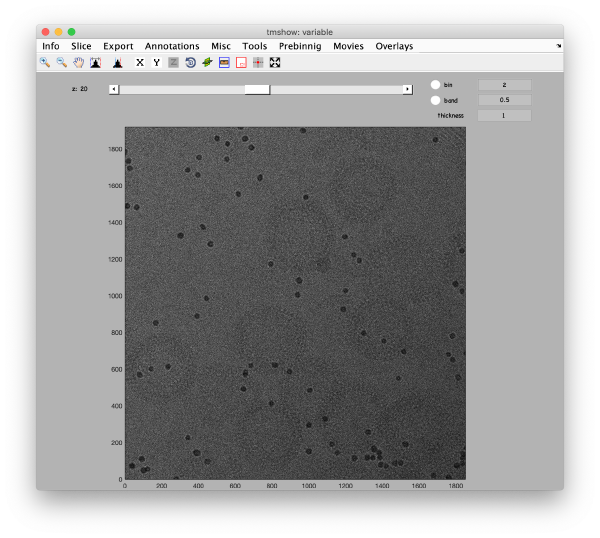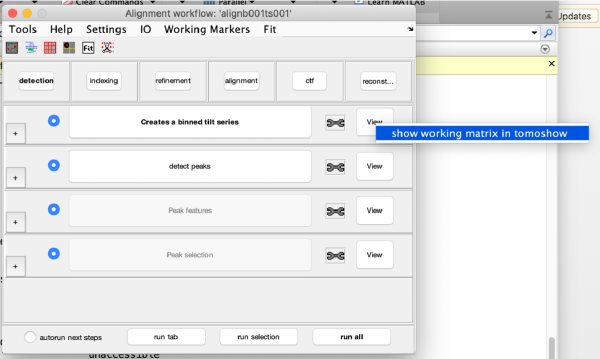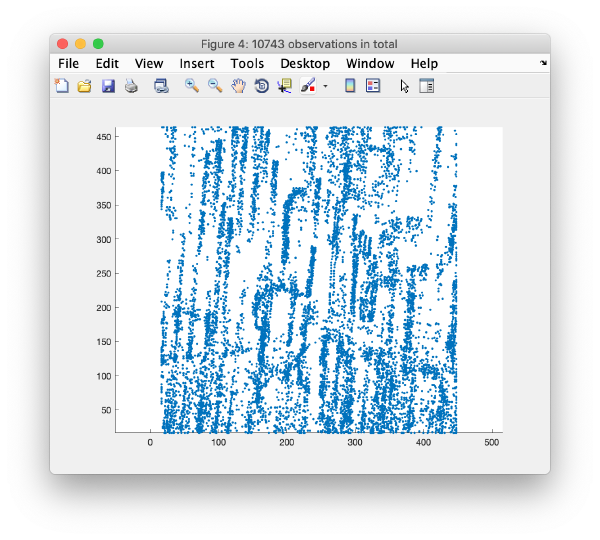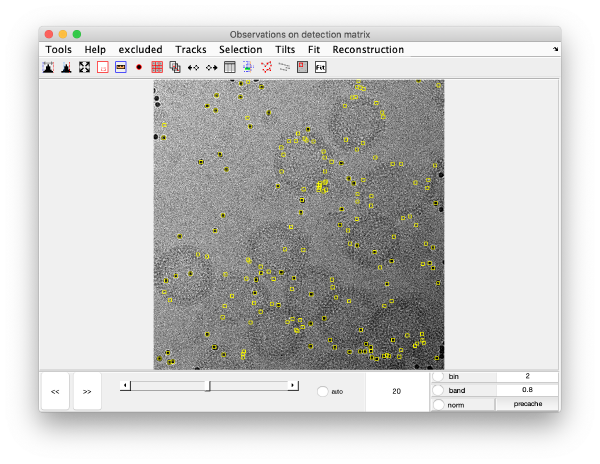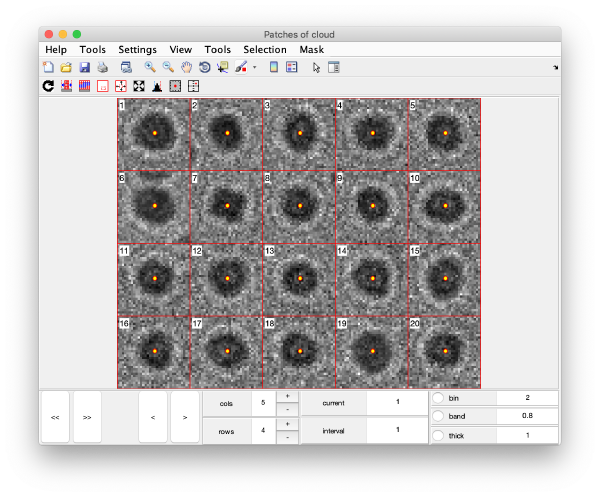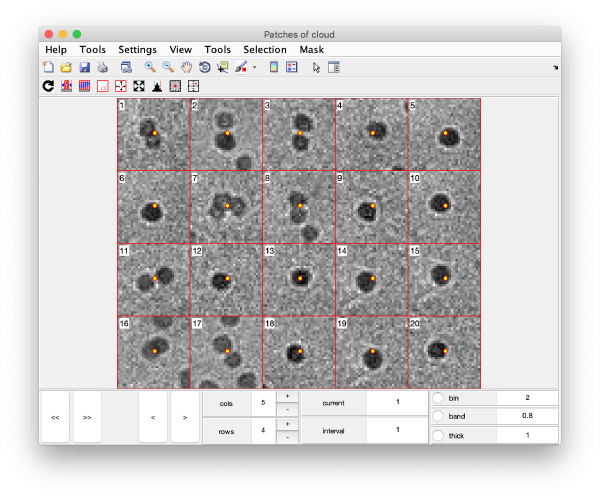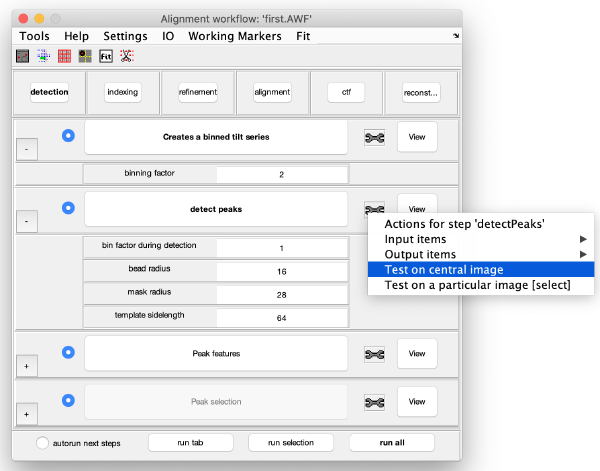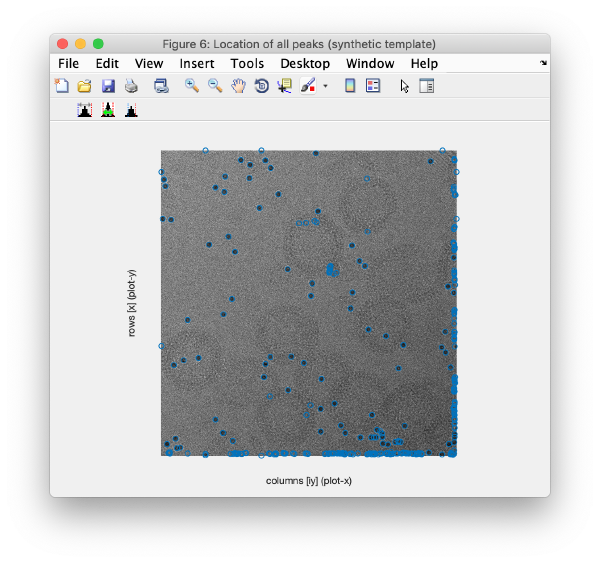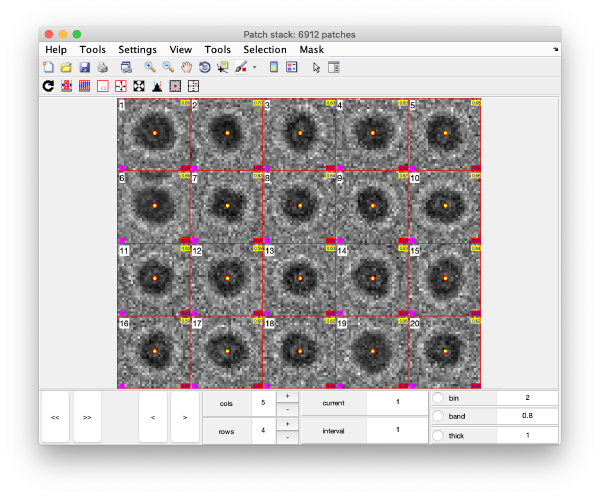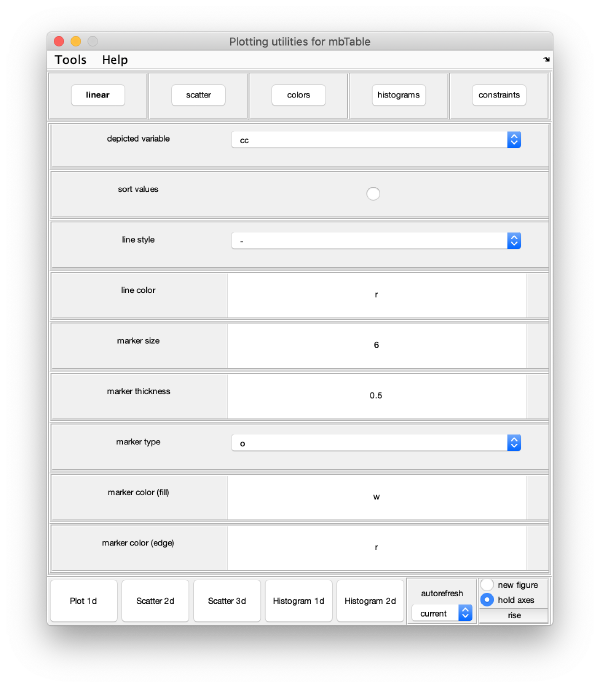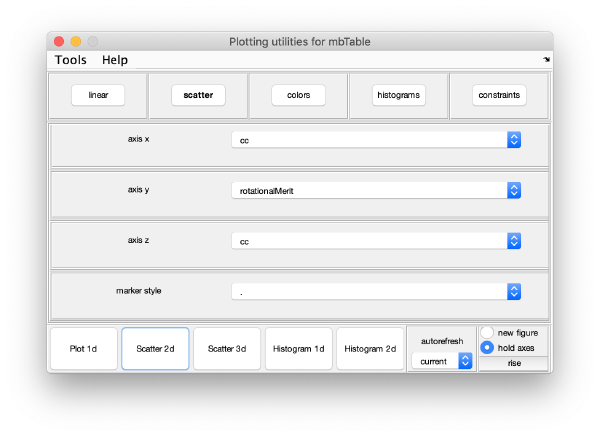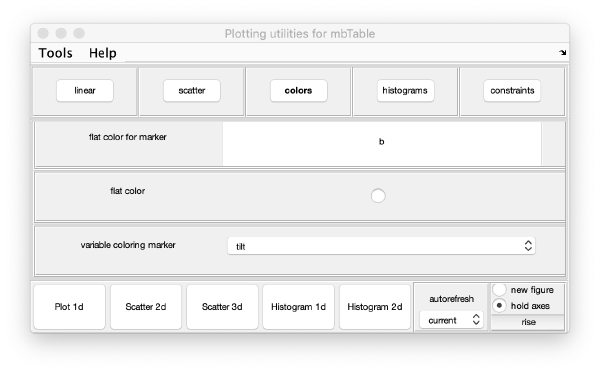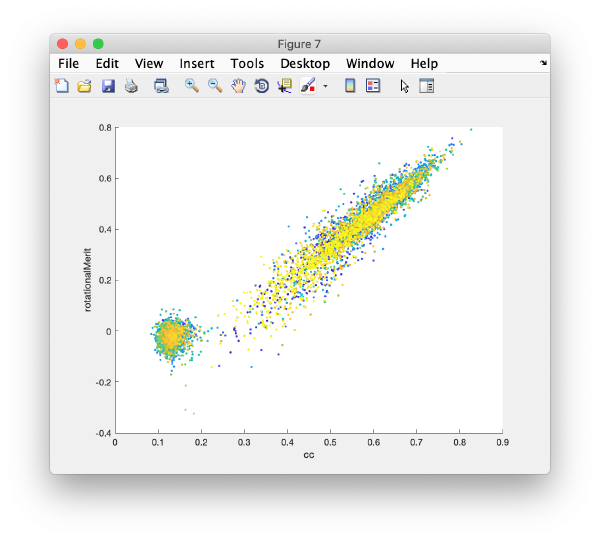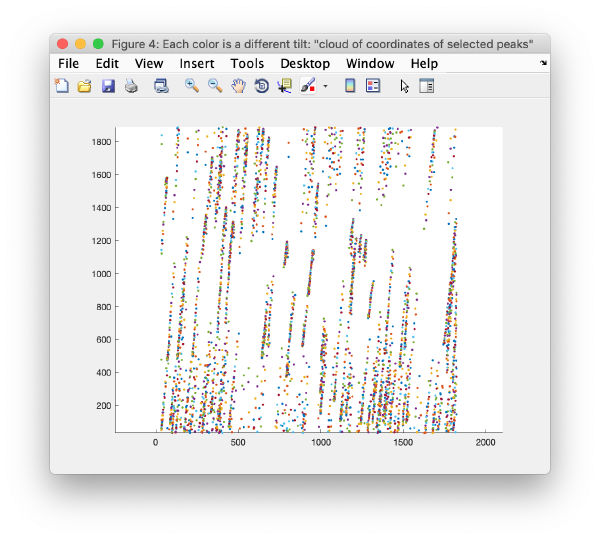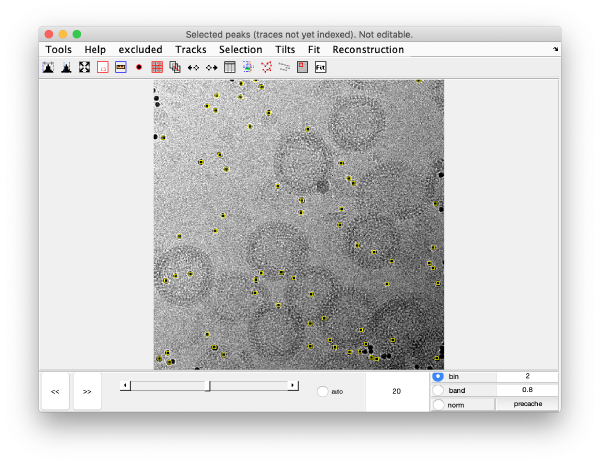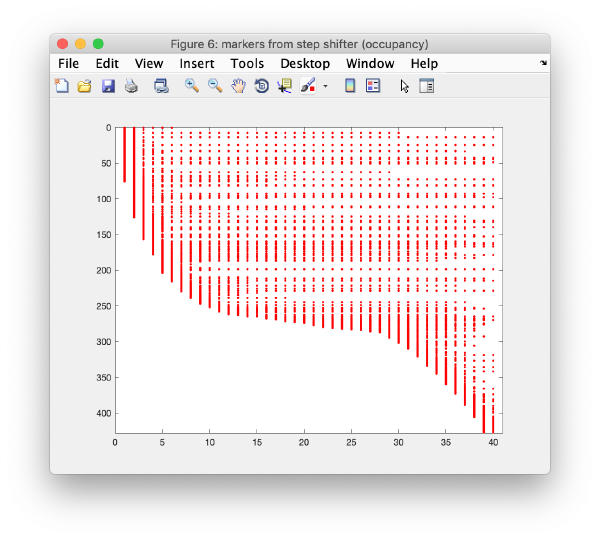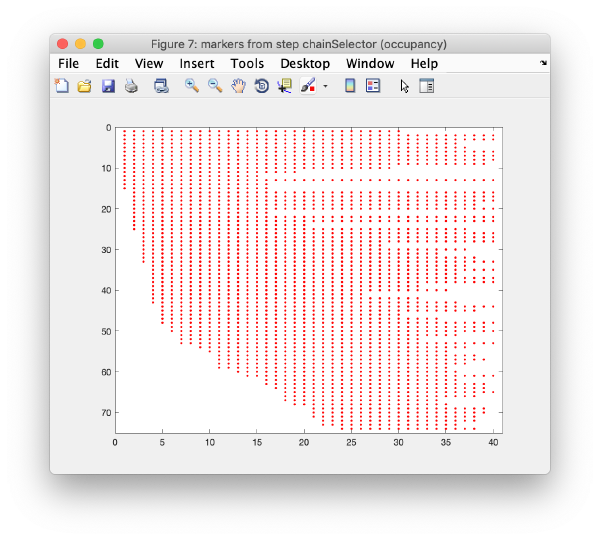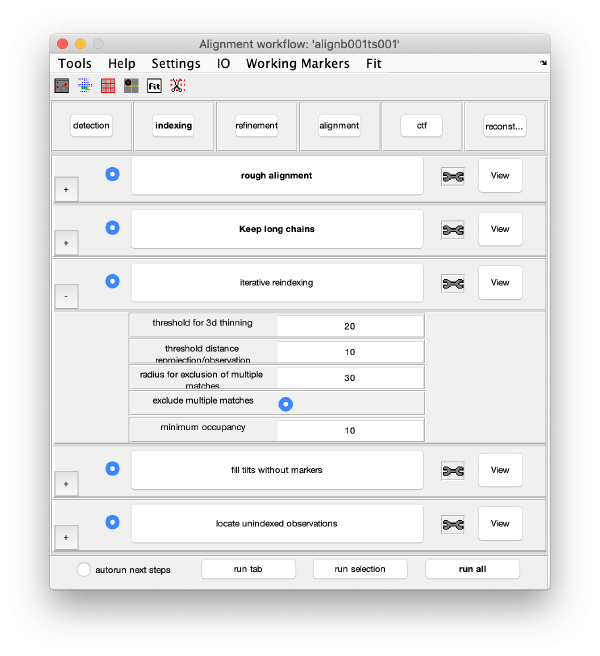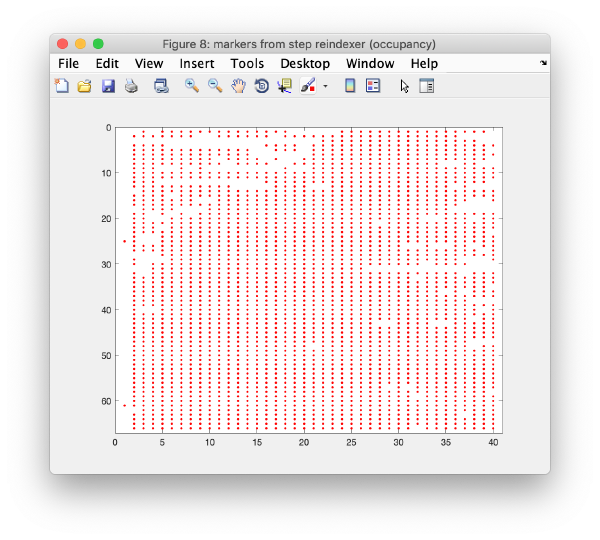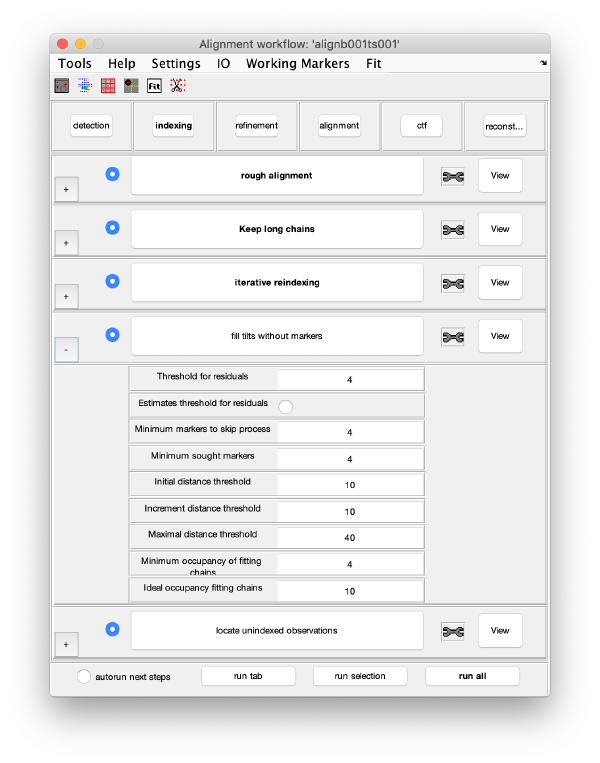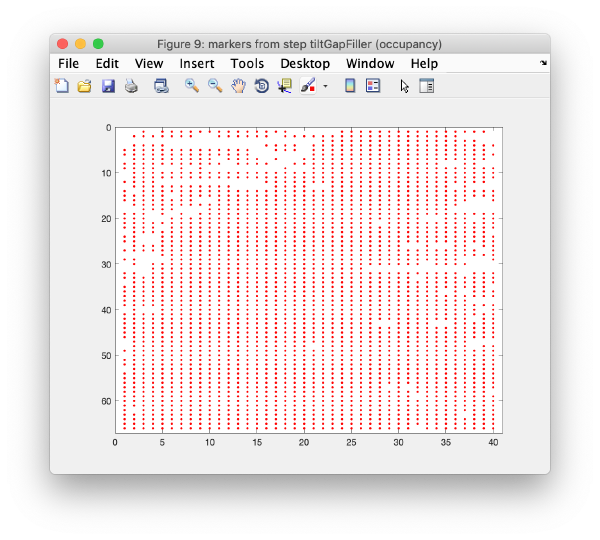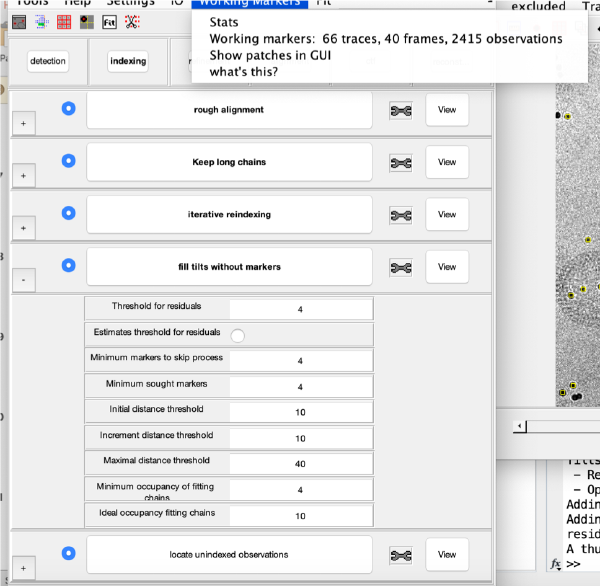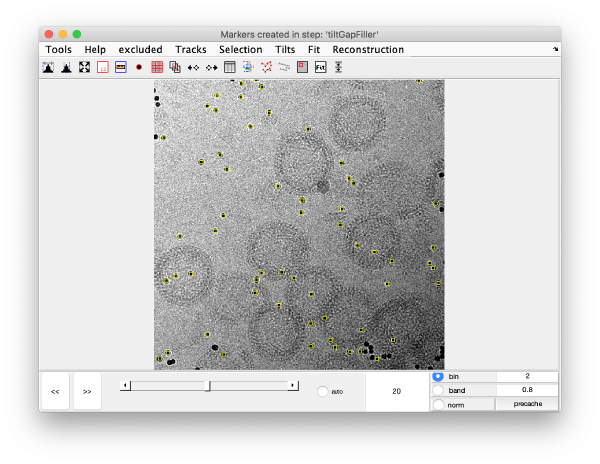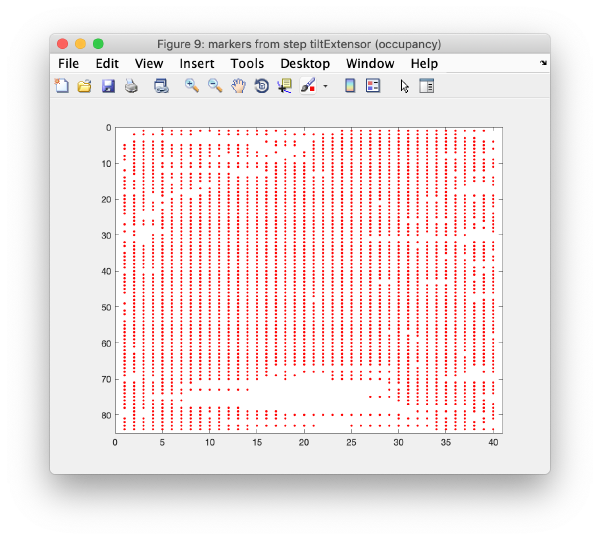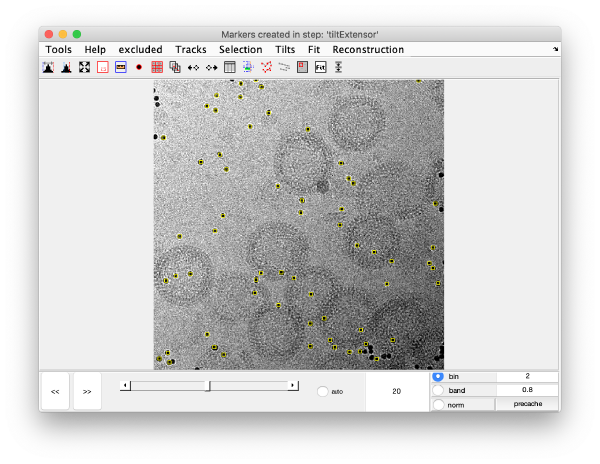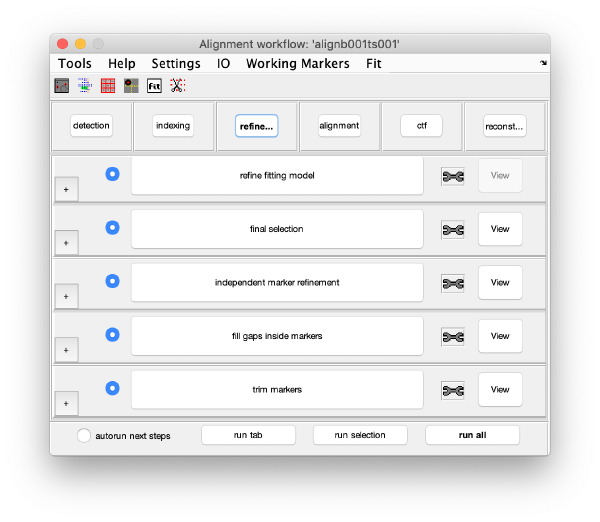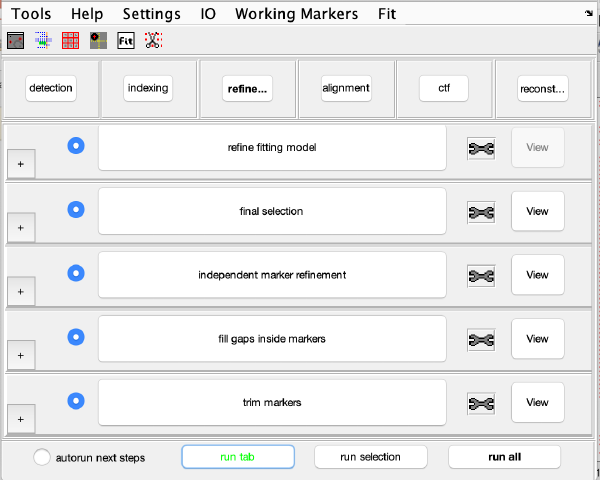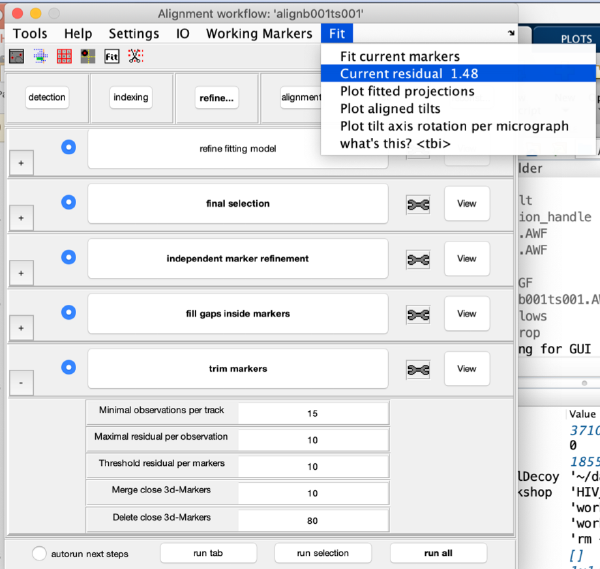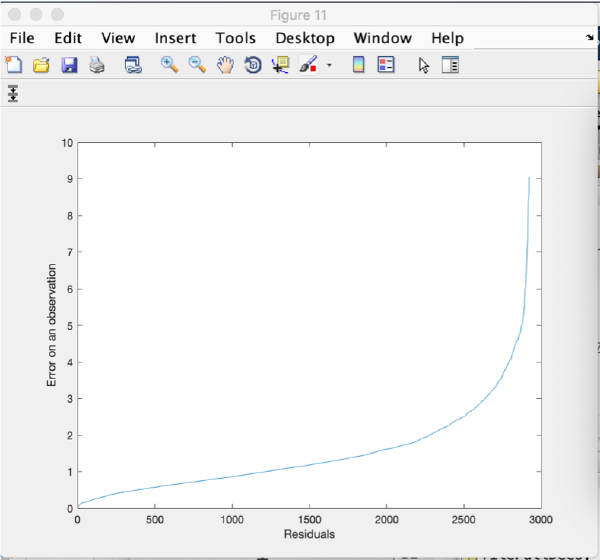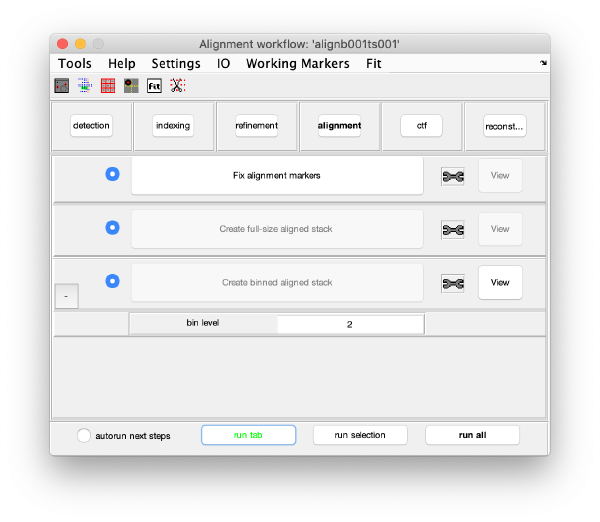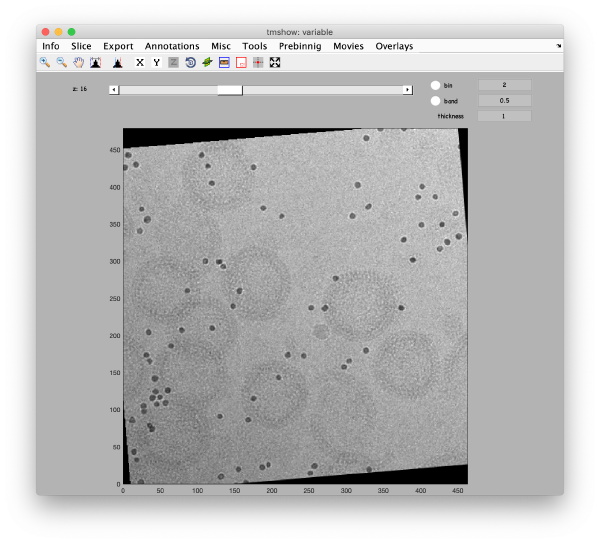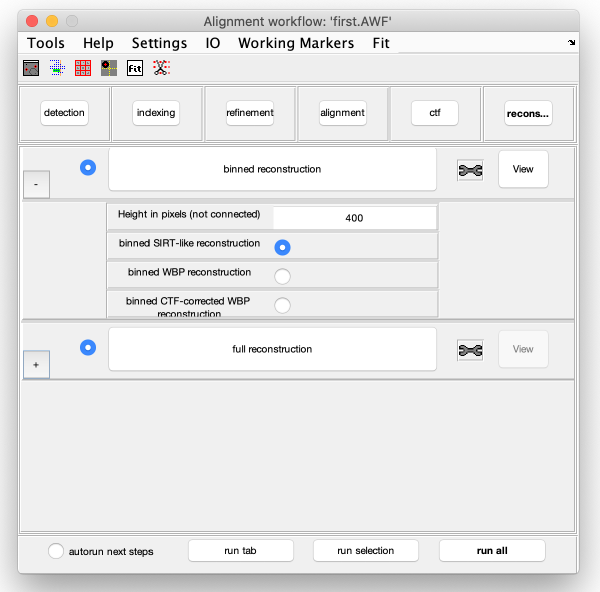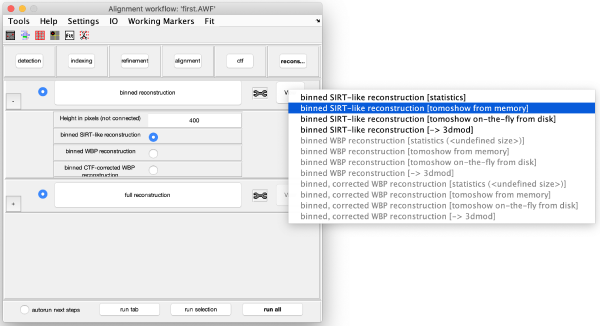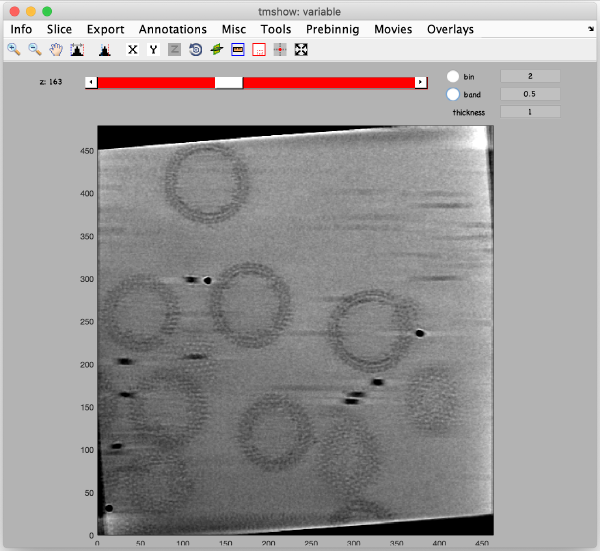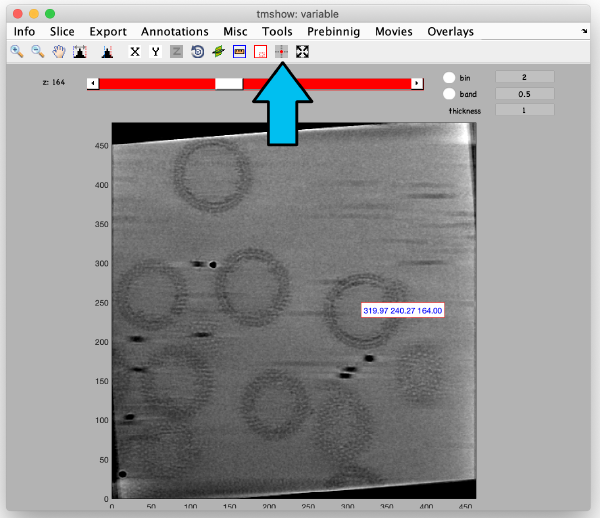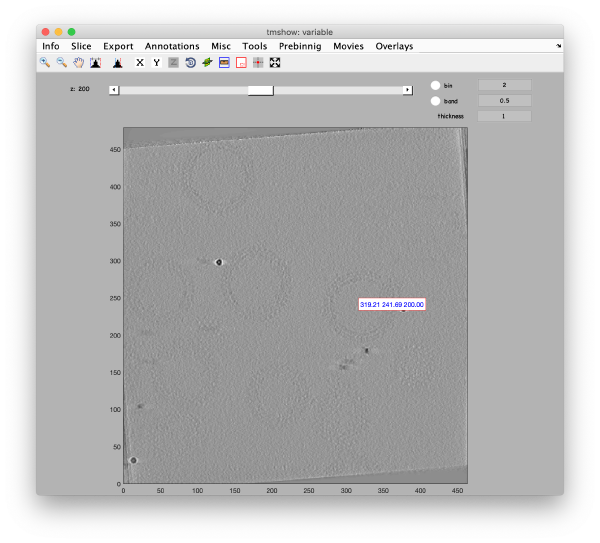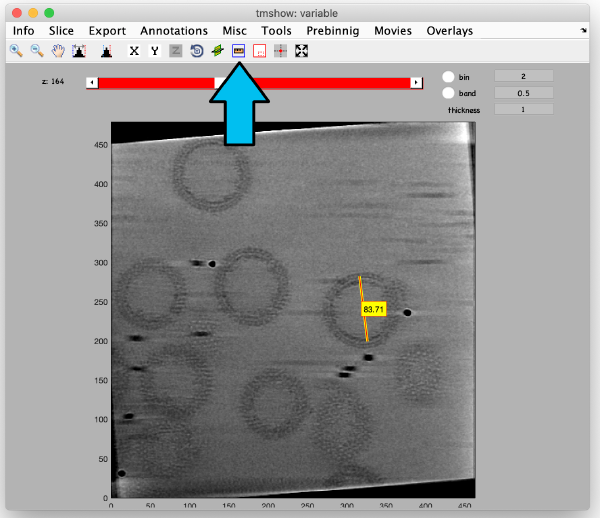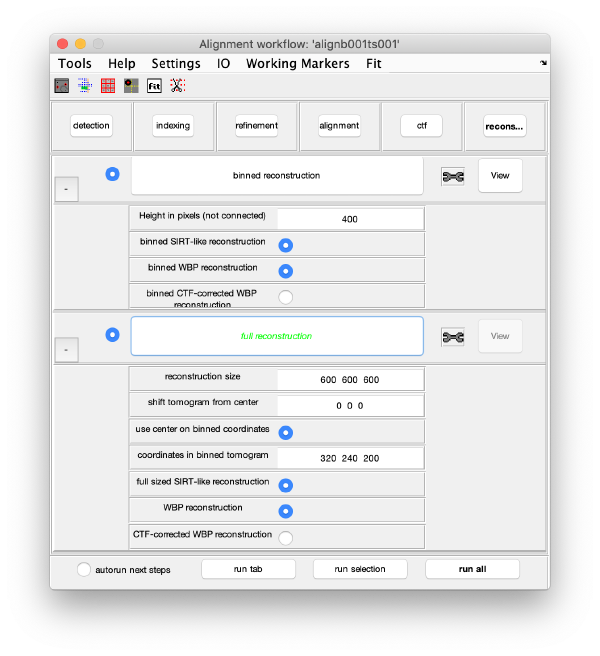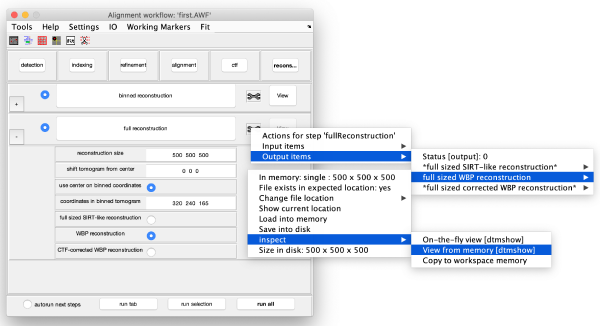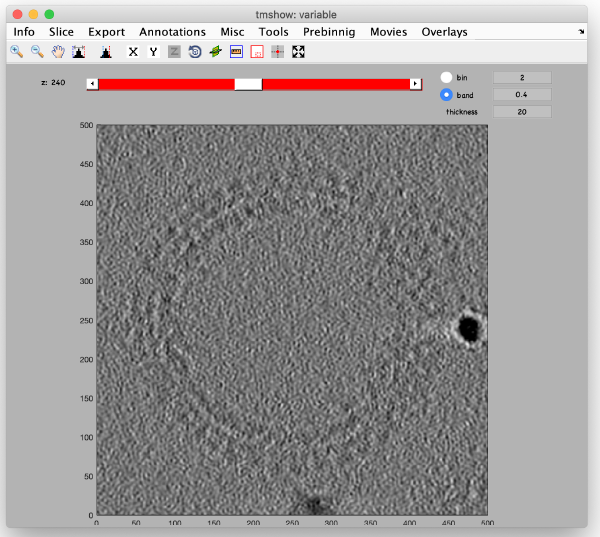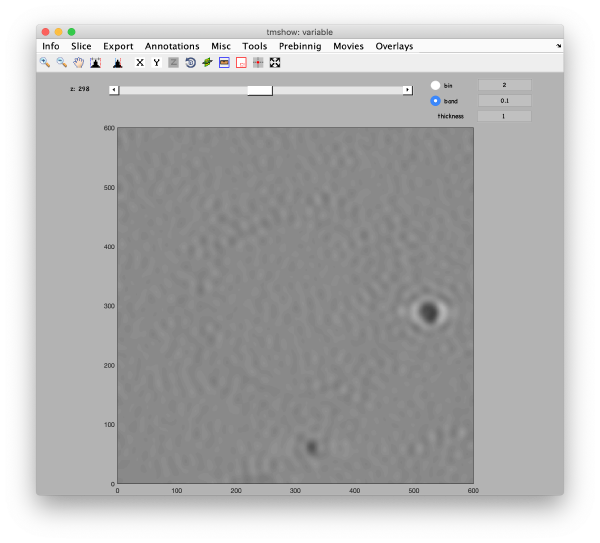Difference between revisions of "Walkthrough on GUI based tilt series alignment"
| Line 20: | Line 20: | ||
The data for the workflow (tilt series, angles) could have been introduced directly when creating the workflow, we however will introduce each item explicitly in this walkthrough. | The data for the workflow (tilt series, angles) could have been introduced directly when creating the workflow, we however will introduce each item explicitly in this walkthrough. | ||
| + | |||
| + | The minimal data to initiate a workflow is | ||
| + | * tilt series matrix (use the matrix) | ||
| + | * tilt angles. | ||
| + | * discarded tilt angles (leave empty) | ||
[[ File:alignGUI_inputWorkflowParameters.png |thumb|center| 600px|input workflow parameters]] | [[ File:alignGUI_inputWorkflowParameters.png |thumb|center| 600px|input workflow parameters]] | ||
| + | |||
| + | == Discarded tilt angles == | ||
| + | |||
| + | If you are unsure on the tilts to be discarded, you can do it in a later stage while you inspect the images in the <tt>dmarkers</tt> GUI, using the <tt>x</tt> and <tt>shift + x</tt> buttons. | ||
| + | |||
= GUI description = | = GUI description = | ||
| Line 37: | Line 47: | ||
=== markers GUI === | === markers GUI === | ||
| − | The icon of the markers GUI allows you to check the position of the working markers in the micrograph. | + | The icon of the markers GUI allows you to check the position of the working markers in the micrograph. If you want to make editions of the GUI permanent, you need to save the current markers. |
| − | If you want to make editions of the GUI permanent, you need to save the current markers. | ||
=== Occupancy plot=== | === Occupancy plot=== | ||
| Line 57: | Line 66: | ||
The tool icon can be secondary clicked and will provide a popup menu with specific tools for each steps and some common one. The common ones are handles to inspect and list the items that are needed (input items) or generated (output items) by the step. | The tool icon can be secondary clicked and will provide a popup menu with specific tools for each steps and some common one. The common ones are handles to inspect and list the items that are needed (input items) or generated (output items) by the step. | ||
The <tt>View</tt> provides tools specific for visualisation of results of the step. | The <tt>View</tt> provides tools specific for visualisation of results of the step. | ||
| − | |||
| − | |||
| − | |||
| − | |||
| − | |||
| − | |||
| − | |||
| − | |||
| − | |||
| − | |||
| − | |||
| − | |||
= The areas in the alignment task= | = The areas in the alignment task= | ||
== Detection == | == Detection == | ||
| + | The goal of this task is to find the positions of the gold bead projections in the tilt series. | ||
=== Visualization matrix === | === Visualization matrix === | ||
| Line 113: | Line 111: | ||
== Indexing == | == Indexing == | ||
| + | |||
| + | The goal of this task is to find ''trails'' of gold beads, i.e., observations in different micrographs that correspond to the same 3d gold bead. | ||
=== Rough Alignment === | === Rough Alignment === | ||
| + | Here all couples of micrographs are compared. | ||
| + | |||
[[ File:alignGUI_occupancySchemeOfTheResultsOfAStep.png |thumb|center| 600px|occupancy scheme of the results of a step]] | [[ File:alignGUI_occupancySchemeOfTheResultsOfAStep.png |thumb|center| 600px|occupancy scheme of the results of a step]] | ||
[[ File:alignGUI_roughAlignmentSelectsManyPotentialTrails.png |thumb|center| 600px|rough alignment selects many potential trails ]] | [[ File:alignGUI_roughAlignmentSelectsManyPotentialTrails.png |thumb|center| 600px|rough alignment selects many potential trails ]] | ||
| Line 121: | Line 123: | ||
[[ File:alignGUI_trailsWithFewMarkersAreThenRejected.png |thumb|center| 600px|trails with few markers are then rejected]] | [[ File:alignGUI_trailsWithFewMarkersAreThenRejected.png |thumb|center| 600px|trails with few markers are then rejected]] | ||
[[ File:alignGUI_noteWorkingMarkersCanBeRestoredToTheResultOfAPreviousStep.png |thumb|center| 600px|note working markers can be restored to the result of a previous step]] | [[ File:alignGUI_noteWorkingMarkersCanBeRestoredToTheResultOfAPreviousStep.png |thumb|center| 600px|note working markers can be restored to the result of a previous step]] | ||
| − | |||
=== Iterative reindexing === | === Iterative reindexing === | ||
Revision as of 10:20, 27 August 2019
Dynamo includes a package for automated aligned and reconstruction of tilt series. This walkthrough guides you through the steps on how to use it with a GUI. A different page in this wiki
Contents
Data
We have prepared a version of a tilt series from the EMPIAR entry [XXXX]
wget https://wiki.dynamo.biozentrum.unibas.ch/html/w/doc/data/hiv/align/b001ts001.mrc
In this binned version, the pixel size is 2'7 Angstrom (original was 1.35, this is bin level 1 in Dynamo)
Creating an alignment workflow
The basic function for invoking the GUI is dtsa (short form of dynamo_tilt_series_alignment;
u = dtsa();
Here, u is an object that will reside in memory during the session and allows to interoperate with the workflow through the command line. It is not necessary when proceeding through the GUI.
The data for the workflow (tilt series, angles) could have been introduced directly when creating the workflow, we however will introduce each item explicitly in this walkthrough.
The minimal data to initiate a workflow is
- tilt series matrix (use the matrix)
- tilt angles.
- discarded tilt angles (leave empty)
Discarded tilt angles
If you are unsure on the tilts to be discarded, you can do it in a later stage while you inspect the images in the dmarkers GUI, using the x and shift + x buttons.
GUI description
The GUI guides of the process of creating and editing a set of "working markers" (in the areas of detection, reindexing and refinement), and then using them to create aligned stacks (alignment tab), analyse and correct their CTF (through wrappers to ctfffind4 and imod) and then create reconstructions.
Settings
Acquisition settings
Here you can enter pixel size (2.7 Angstroms), Cs (2.2), nominal defocus (-4.0 microns, used if the CTF area is connected).
Controls
markers GUI
The icon of the markers GUI allows you to check the position of the working markers in the micrograph. If you want to make editions of the GUI permanent, you need to save the current markers.
Occupancy plot
Shows a scheme of which markers are present in which tilt numbers.
Gold bead gallery
Crops the gold beads currently contained in the working markers and shows them as a gallery.
Execution Areas
The GUI is divided in five areas. Each are comprises sets of steps that can be executed sequentially. Sequential execution is the natural way of proceeding; but steps can be visited in any order, i.e., a step can be reexecuted in a later moment after updating its information.
Steps
Steps needs to be open (letters in black, not grey) in order to be executed. They become open when the input they require gets computed and stored by a previous step during execution of the workflow. When a step is under execution, its pushbutton becomes green.
Step Toolbox
The tool icon can be secondary clicked and will provide a popup menu with specific tools for each steps and some common one. The common ones are handles to inspect and list the items that are needed (input items) or generated (output items) by the step. The View provides tools specific for visualisation of results of the step.
The areas in the alignment task
Detection
The goal of this task is to find the positions of the gold bead projections in the tilt series.
Visualization matrix
This step just creates a binned version of the tilt series stack to accelerate visualizations that will be invoked in a later point.
Detection of gold beads
Computation of observation features s
Selection of best gold beads
Indexing
The goal of this task is to find trails of gold beads, i.e., observations in different micrographs that correspond to the same 3d gold bead.
Rough Alignment
Here all couples of micrographs are compared.
Selection of stable trails
Iterative reindexing
Tilt gap filling
Trail extension
Refinement
Alignment
Fix the markers
Align the tilt series
CTF
In this GUI CTF estimation and correction are delegated to CTFFIND4 and Imod's ctfphaseflip programs respectively. This part will not be used in the workshop.'
Reconstruction
Binned reconstruction
Full sized reconstruction
]

